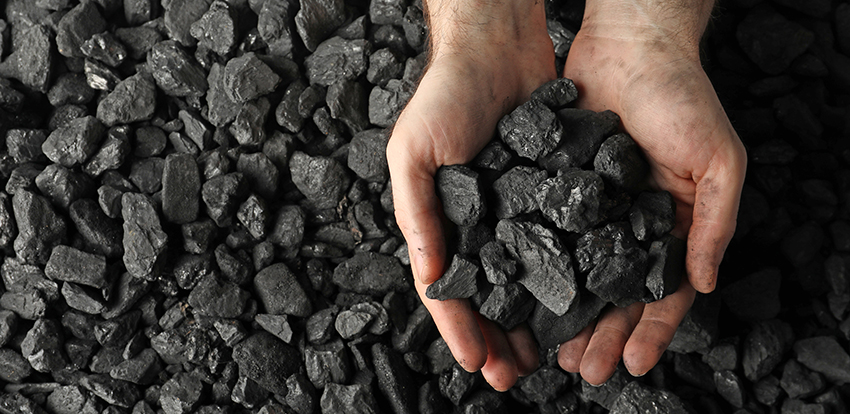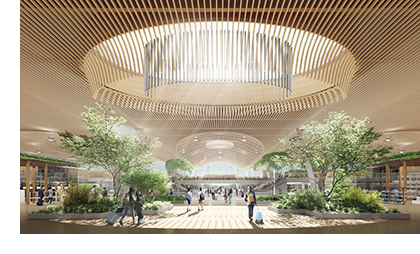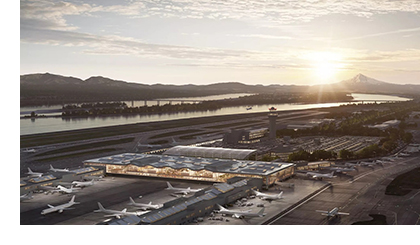Summer 2021

Highlights from this Month's e-Newsletter
Feature
A Carbon Explainer
Emissions and Building Construction
As extreme climate events become more frequent, concern over climate change has grown, and designing buildings to lessen environmental impacts has taken on greater importance. Understanding carbon impacts, environmental implications and associated concepts is crucial to today’s design process. But some terms are more easily understood than others. Here’s a brief explanation of the language often used during conversations about carbon and the built environment, including a glossary of common terms.
 Carbon and Building Materials: Biogenic, Embodied, Operational
Carbon and Building Materials: Biogenic, Embodied, Operational
Carbon accounting is the process of calculating overall carbon emissions associated with the chosen building materials. It estimates how much carbon is sequestered into materials versus how much carbon is emitted during material extraction and manufacture, construction and eventual demolition and disposal, as well as emissions during habitation of the building.
Biogenic carbon refers to the natural processes where carbon is sequestered into a building material itself, such as the carbon sequestered into wood during tree growth. Biogenic carbon is released when the material decays or is destroyed. Some materials contain no biogenic carbon; others, like wood, contain considerable amounts.
Embodied carbon is often confused with biogenic carbon, but that is a misconception. It does not refer to carbon sequestration. Instead, it refers to emissions related to construction and building materials. These embodied emissions encompass all greenhouse gas emissions that arise from the extraction, manufacture, transport, installation, maintenance and disposal of building materials. Emissions from construction activities, like repairs and remodels, are also included in this category, as are emissions from building demolition and disposal.
Operational carbon is a separate category from materials; it refers to carbon emissions during typical habitation and operation of a building, like heating, cooling and powering the building and its various systems. It does not include any repair or remodel activities. These fall within the category of embodied emissions of building materials.
Quantifying Carbon Emissions: LCAs and EPDs
Life cycle assessment (LCA) is a comprehensive measure of the total environmental impact of an assembly or structure that examines its entire life cycle, start to finish. This assessment often incorporates environmental product declarations (EPDs) of readily available materials like wood products. EPDs, as defined by the International Organization for Standardization (ISO) under ISO 14025, quantify environmental information on the life cycle of a product to enable comparisons between products fulfilling the same function.
The American Wood Council (AWC) has published several EPDs that cover cradle-to-gate carbon emissions for wood products. (GO >) The values are industry averages that cover the emissions from harvesting, transportation to the mill and manufacturing processes at the mill. Wood products typically result in far less emissions than their competitors for two reasons: first, wood products don’t require drastic changes to the material’s original form, unlike materials that need to be mined and refined.
Second, wood manufacturers often use waste wood, like sawdust, as fuel for powering the manufacturing process instead of fossil fuels, which have a much larger carbon footprint.
The EPDs for North American wood products account for biogenic carbon per ISO 21930, which requires either stable or increasing carbon stock on a national level, or that the forest it originates in is certified for sustainable practices by a third party.
What about Carbon Neutrality and Net Zero… or is it Zero Net?
Carbon neutral describes a project or operation that balances the amount of carbon emissions it generates with an equal amount of carbon sequestration. Net zero, which is sometimes used interchangeably with carbon neutral, may refer to either embodied emissions or operational emissions, depending on context.
To attain carbon neutrality, carbon is quantified in tons of emission versus tons of sequestration. If these are equally balanced, the project is carbon neutral—or perhaps even carbon negative, if tons of sequestration are greater than tons of emission. Carbon neutrality can be accomplished a number of ways, but often involves planting more trees, investing in reforestation projects and other forms of carbon offsetting. Carbon offset is carbon absorption specifically intended to compensate for carbon emissions in the context of carbon neutrality. Offsets are often purchased as carbon credits (on a one credit per 1 ton sequestered basis) from entities specializing in carbon offsetting.
Net zero, on the other hand, can mean balancing an amount of emissions with the same amount of sequestration, especially when referring to “Net Zero 2050” and other climate goals. But net zero is sometimes interchanged with zero net energy, a term that refers to buildings that have no net power use during operations. Zero net energy buildings often have components that generate power and store it and/or push it back on the grid, compensating for the energy used during operation. For this reason, net zero can be a somewhat confusing term.
Need more help? APA’s engineered wood specialists offer free assistance to construction professionals. CONTACT >
Appendix: Glossary of Carbon Terms and Related Concepts
Biogenic carbon: carbon sequestered from the atmosphere during biomass growth, such as in forests.
Carbon accounting: estimates how much carbon is sequestered into materials versus how much carbon is emitted during material extraction and manufacture, construction and eventual demolition and disposal, as well as emissions during habitation of the building.
Carbon credit: a certificate or permit equal to one ton of greenhouse gas emissions, purchased or traded as a carbon offset.
Carbon footprint: all greenhouse gases emitted by a given entity (e.g., a person, a company, a nation). Carbon footprint is counted by ton of emissions.
Carbon neutral: making no net release of greenhouse gas emissions, usually by compensating for emissions through carbon offsets such as planting trees.
Carbon offset: a deliberate reduction in atmospheric carbon that is intended to compensate for emissions.
Carbon sequestration: the process of removing carbon dioxide from the atmosphere through absorption and storage.
Carbon sink: a material that sequesters carbon dioxide. Globally, the most consequential carbon sinks are oceans, soils, vegetation, forestlands and wilderness, all of which sequester large amounts of atmospheric carbon. Many manmade carbon capture projects, such as injecting deep-sea rocks with carbon dioxide, are being developed, but these are small in scale compared to natural carbon sinks.
Carbon stock: the amount of carbon stored in a system, such as forestlands. North America and Central America have maintained a consistent carbon stock over multiple decades, according to the 2020 Global Forest Resources Assessment.
Cradle-to-gate, cradle-to-completed, cradle-to-grave, cradle-to-cradle: describe various segments of the product life cycle. Cradle-to-gate covers material extraction, transportation to the manufacturing facility and the manufacturing process. Cradle-to-completed covers the cradle-to-gate span plus transportation of materials to building site and construction. Cradle-to-grave covers the entire product life span; easier to quantify with something simple, like an aluminum can, much less so with buildings. Cradle-to-cradle describes a product destined to be recycled into a new product at the end of its life span, ideally leaving no waste. Also see life cycle.
Embodied carbon or embodied emissions: greenhouse gas emissions that arise from the extraction, manufacture, transport, installation, maintenance and disposal of building materials.
Environmental product declaration (EPD): these quantify environmental information on the life cycle of a product or material.
Life cycle assessment (LCA): sometimes called life cycle analysis, an LCA is a comprehensive examination of the environmental impacts of a material, process or service over its entire life span.
Life cycle or product life cycle: the entire life cycle of a product, through material extraction, manufacture, distribution, use and eventual destruction and disposal.
Net zero: producing no net greenhouse emissions or having zero net energy consumption. See Net zero energy building.
Net zero energy building: a structure that has no net energy consumption. Not a measure of carbon emissions.
Operational carbon: emissions produced as a result of habitation, such as heating, cooling and power.
Zero energy, zero net energy (ZNE), Zero net energy building (ZNEB): see Net zero energy building.
Project Spotlight
 PDX Gets Back to its Roots with Engineered Wood
PDX Gets Back to its Roots with Engineered Wood
Renderings courtesy ZGF Architects/Port of Portland
Passengers traveling through the Portland International Airport (PDX) are in for a stunning surprise. The 81-year-old airport is currently undergoing a major transformation as part of the $2 billion PDX Next overhaul project. For the pièce de résistance, the main terminal building is getting equipped with a brand new, stunning, mass timber roof.
The $1.2 billion main terminal redevelopment has been in the works for the last 4 years as the Port of Portland has worked closely with local design firm ZGF Architects, and KPFF Consulting Engineers to develop and perfect their vision.
Aiming to incorporate more Pacific Northwest-inspired architecture that is both sustainable and earthquake resilient, designers looked to mass timber.
The extensive 300,000-square-foot roof renovation features approximately 2.5 million board feet of timber. But the real star of the show is the nearly 300 magnificent 80-foot arched glulam beams from APA member Zip-O-Laminators.
The custom glulam beams feature various sized arches that will be intentionally placed to create a domed or vaulted effect in the ceiling.
The diaphragm is constructed from 2-inch mass plywood panels (MPP) from APA member Freres Lumber Co., which will be molded into place over the arched glulam. MPP is a large-scale, laminated-veneer-lumber-based engineered wood panel that can be used as alternative to cross-laminated timber (CLT).
Two local companies specializing in mass timber joined production to help bring the Port’s vision to life. “We’ve met every week for the last two-and-a-half years just going through the design and figuring out all details,” said Jared Revay, mass timber project manager at Swinerton Builders.
“The biggest challenge we’ve faced so far was with the design and fabrication and figuring out what the 2D shape of the MPP needed to be so that when you bend it, it fits precisely within the other pieces on the roof,” said Revay. “Every single piece on the roof is unique, with a unique number, that fits precisely within the contorting and bending of the roof. It’s critical all the joints align perfectly and that the panels are installed with great precision.”
The 2-inch-thick MPP is being molded into shape over the arched glulams manually, with exact fastening.
 Timberlab, Swinerton Builders’ mass timber company, is serving as the fabrication partner on the project. “There are a number of MPP fabrications that are smaller, more unique and quite complex, and Timberlab is the only facility in the region that has the five-axis fabrication capabilities that can handle this volume,” said Revay.
Timberlab, Swinerton Builders’ mass timber company, is serving as the fabrication partner on the project. “There are a number of MPP fabrications that are smaller, more unique and quite complex, and Timberlab is the only facility in the region that has the five-axis fabrication capabilities that can handle this volume,” said Revay.
The roof is being preassembled on-site in 18 massive cassettes that will be slid into place over the existing roof in a specific sequence. Revay expects each cassette sequence will take about one month for installation.
Construction on the main terminal roof is expected to finish fall of 2022, with the rest of the interior construction continuing through 2023. The final pieces of the PDX Next project are scheduled for completion in 2025.
Wanting to honor and celebrate the local area, the Port prioritized sustainably and locally sourced timber for the project.
“The Port and the project stakeholders really wanted to support the local economy,” said Revay, explaining that all the timber used was sourced from within a 600-mile radius.
Oregon, the top producer of softwood lumber in the United States, has deep roots within the mass timber industry
“MPP technology is relatively new and was developed by the Freres family who has been based in Oregon for nearly 100 years,” said Sam Dicke, business development representative with Timberlab. “Being able to use their product and support a great family-owned company is a really cool way to showcase that Oregon history.”
The complex and unique design proved to be challenging, but the team persisted fueled by a passion to create a beautiful, sustainable space that pays homage to the area’s rich history and creates a space to be enjoyed by travelers from around the world for years to come.
“Nearly twenty million people go through this airport a year. That’s about 50,000 people a day that will be seeing what’s possible with mass timber,” said Dicke. “That is the coolest thing in the world.”
Inside the Circle
 Meet Roy Frederick
Meet Roy Frederick
Roy Frederick is an Engineered Wood Specialist for APA – The Engineered Wood Association. He is a resource for builders, engineers, architects and code officials, providing training on the use and installation of engineered wood products.
Roy is an experienced homebuilder, having worked for over 20 years in all aspects of residential construction, estimating and design, including code compliance, design changes and plan performance. He has worked for Brighton Homes, Trendmaker Homes and, most recently, David Weekley Homes, which are based in the major markets of South Central and Southeast Texas, as well as Indianapolis, Indiana. Roy is based in New Braunfels, Texas, and is a graduate of Lamar University with a B.S. in criminal justice.
Current Designers Circle newsletter RETURN ►